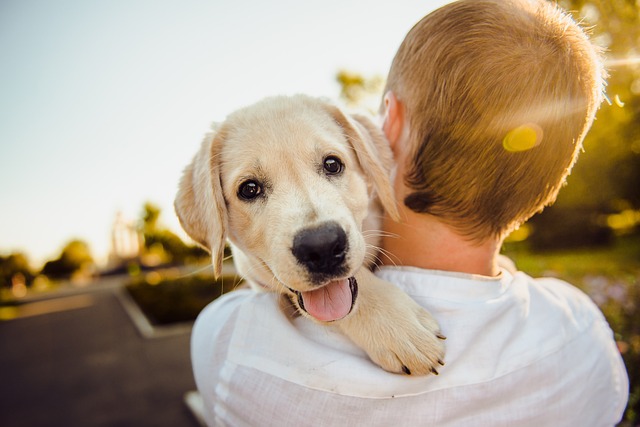Making your dwelling safe for a new pet is not unlike child-proofing your home. Puppies and kittens can all get into things that are potentially harmful to them. Even mature animals that are new to your household can make some poor choices.
Pet-proofing your home requires thinking about what is accessible and might provoke curiosity. Let’s go room to room to see where the hazards are and what actions to take.
Living room
You’ll probably spend most of your time in the living room playing with Fluffy or Fido. That said, there are still a lot of things they can get into that you need to manage. Tie up electrical cords, remove or place toxic houseplants out of reach, cover air and heating vents, screen off the fireplace, and search for small items left lying around that could, for example, be a choking hazard.
To safeguard damage, store any precious possessions high up, use pee pads and discourage furniture scratching with anti-scratch tape. If you don’t want to give your dog or cat free rein of this space while you’re elsewhere, a baby gate or playpen will limit their access.
Kitchen
Your canine or feline friend will likely be drawn to the kitchen, especially when you’re there. They associate this room with meal time and maybe the chance for a tasty treat between feeding times. Be aware that some people food can harm an animal, so don’t leave items out where your pet might get into them. You’d be surprised at just how resourceful your tabby or lab can be.
Child-proof latches, covered trash cans inside a cupboard, stove guards and gates are all helpful. Any medications or supplements must be secured out of the way, as should cleaners and other chemicals. Don’t forget to stow knives and other dangerous kitchen implements safely.
Bathroom
As with the kitchen, cleaning supplies and medication that are kept in the bathroom have to be stored out of reach. This goes as well for bath salts, potpourri, and personal care products. Be on guard that small items like hair elastics or clips are not left laying around and that Fido isn’t in the bathroom when you’re heating up a curling iron.
Remember to keep the toilet seat cover closed. Your pet may see this as a source of drinking water, falling in if they’re not careful or ingesting cleaning materials. To save yourself some grief, place extra rolls of toilet paper behind a cupboard door. Otherwise, you may have quite a mess to clean up.
Bedrooms
Again, look for where you typically have medication, cosmetics, hair accessories, and other personal items. Then, move these to a safer place if needed. Depending on your decor, you may have various knickknacks and houseplants in this room so take the time to check that they’re not accessible. Hanging wires from lamps and computer cords should be tied back.
Adopting a pet is your opportunity to become a little tidier in the bedroom, if you don’t already pick up your clothes and keep doors and drawers closed. Your dog or cat will just love to roll around on or paw something that has your scent. This is where accidents will happen and your clothing may be ruined.
Laundry and utility room
Chances are, this room will contain a number of cleaners and chemicals that can hurt your pet. It also may be the designated location for kitty’s litter box. Therefore, it goes without saying that you have to take extra care and really scrutinize the environment for what might pose a problem.
Safety latches on cupboard doors and high shelves are helpful. Dispose of anything harmful that you no longer need, pick your laundry up off the floor, and close washer and dryer doors when the appliances are not in use.
Garage and yard
If your canine is lucky enough to have a fenced yard, you may think you don’t have worry too much about their outdoor safety. However, it’s important to inspect the grounds each time you let your pet outside. You certainly don’t want them getting into the compost or fertilizers, or hurting themselves on lawn tools left out. Pet-proofing here includes making sure that you have no toxic plants and no holes in the fence. In addition, you should ensure that HVAC units and electrical boxes are blocked off.
The garage is another area that must be checked. Hazardous chemicals, sharp tools, mouse traps, nails on the floor, and other fallen debris should all be attended to.
Finally
In short, pet-proofing your home requires inspecting your entire property, going through rooms, hallways, closets, the garage, and yard to find and fix anything that could hurt your new adoptee. With a bit of prevention, you’ll be able to keep your pet safe and avoid damage to your possessions.

